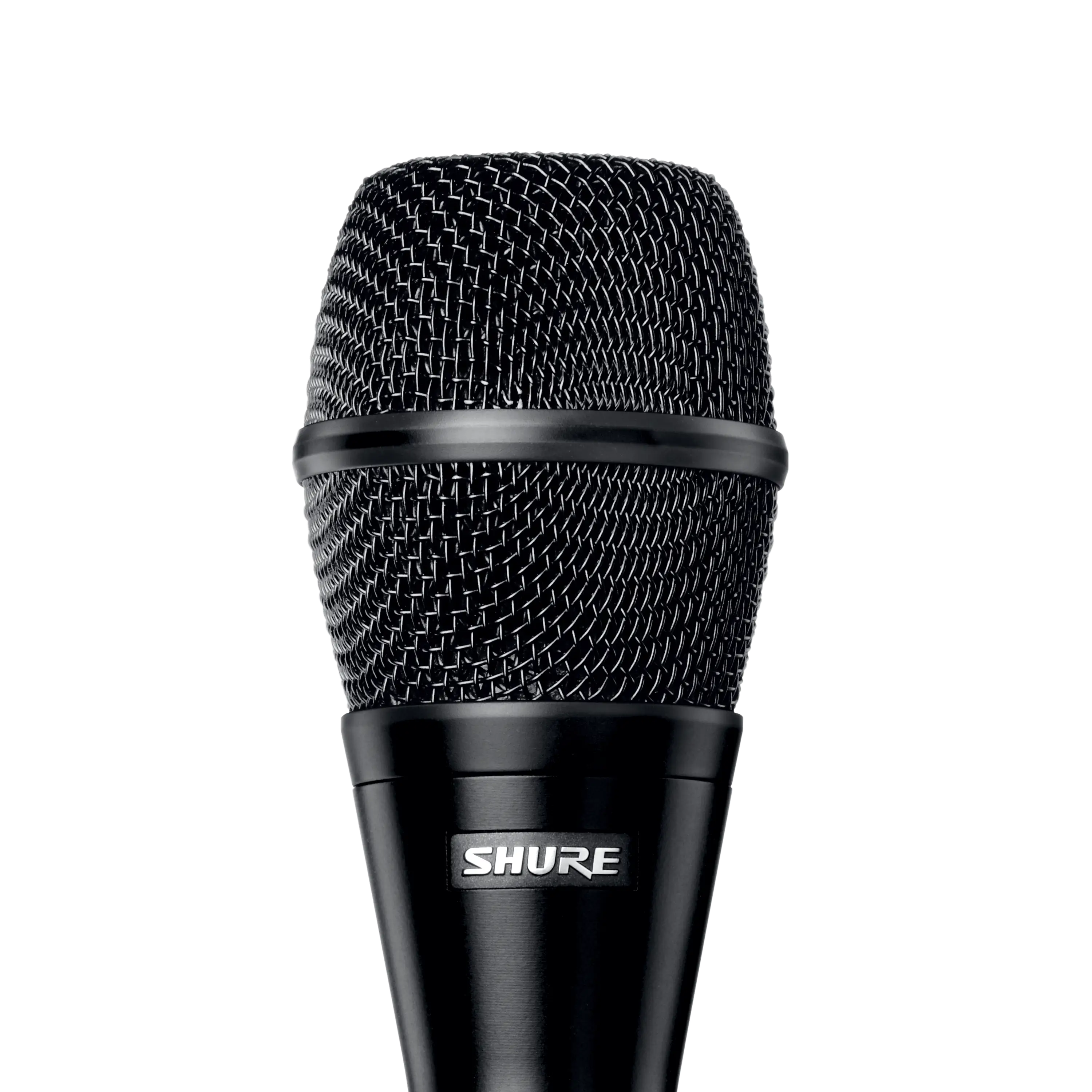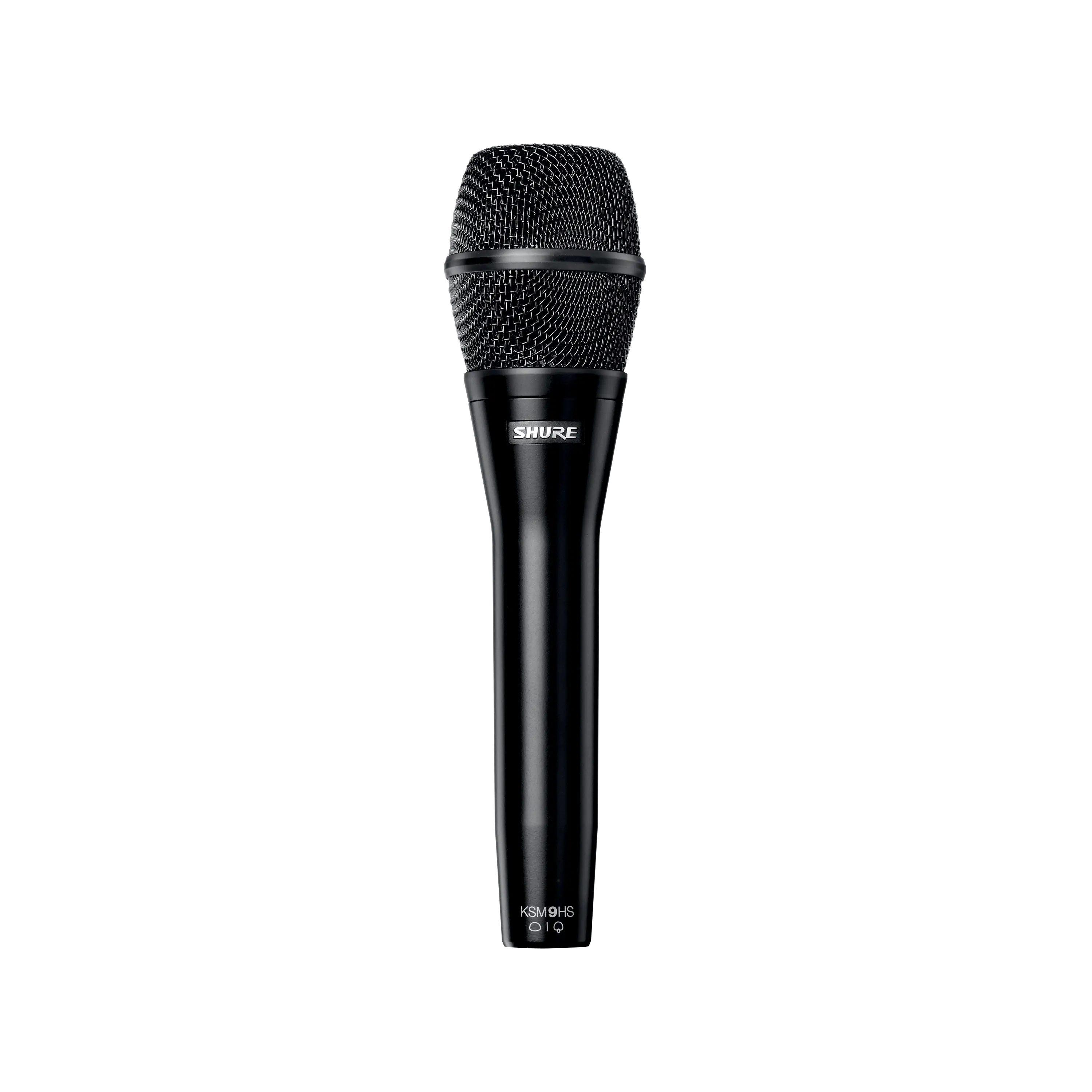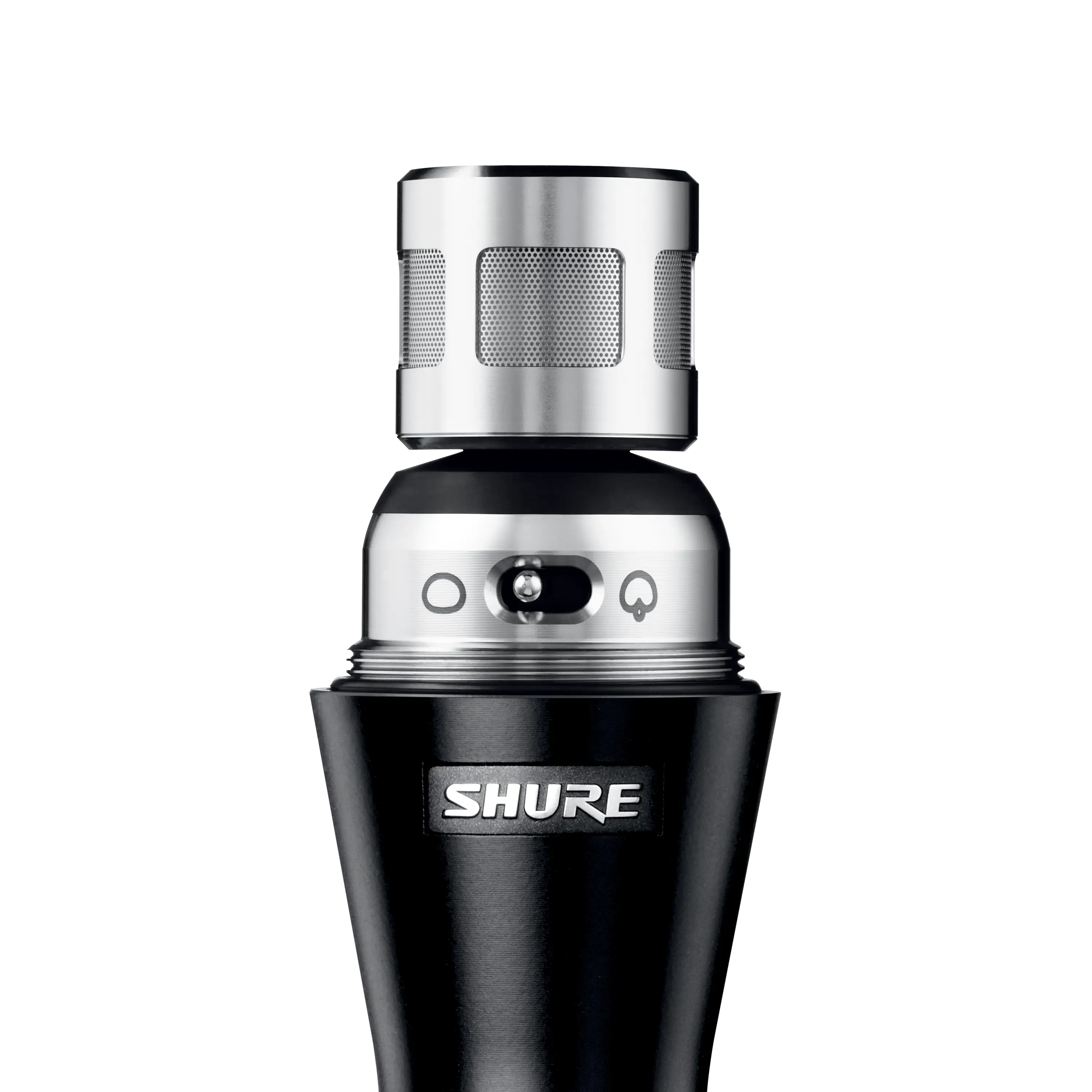Quick Change Artist: It’s a Hypercardioid! It’s a Subcardioid! It’s a KSM9HS!

Shure Notes Editors/Contributor: Soren Pedersen

Back in 2005, Shure introduced the KSM9 vocal condenser microphone. What made this microphone unique was its flip-of-a-switch ability to change from cardioid to supercardioid. Originally, a component in Shure's premium UR24S/KSM9 wireless system, the mic found an enthusiastic audience that warranted its standalone status.
Live sound guys loved it. Take John Mills, for instance: "This is a solid microphone with sound rivaling some of the best studio mics. If you're serious about vocals, this is certainly a mic to try out. On second thought, just go get one and save some time and frustration with your vocal sounds."
And Pro Audio Review said: "This mic sounds like what you have always wanted a live mic to sound like. That is to say you have the brilliant clarity of a large diaphragm studio microphone in a durable live application. It is crisp without sounding too harsh, but warm and natural for a true reproduction of the human voice."
The pros were on board and so were Erykah Badu, James Taylor, Buddy Guy and a bunch of other important people. But back at Shure HQs, the engineers decided to take the KSM9 not only higher and higher, but lower, too. So back there, in Shure's top secret Technology Annex, the question was, "What if the KSM9 came with switchable hypercardioid and subcardioid patterns?"
"What if …?" is here. On October 26, 2012 Shure announced the KSM9HS vocal condenser microphone. To get the Shure perspective (since all the reviews aren't yet in), we went straight to Shure's Soren Pedersen. He's a Product Specialist and in true Shure Associate form, he's also connected to the music business as a sometimes-recording engineer (rumor has it that one in five Shure Associates are weekend warriors of one stripe or another). We asked him to tell us what's so great about this mic.
This is a sibling of the KSM9 vocal condenser microphone. How is the KSM9HS different?
The two share many design elements like the dual diaphragm cartridge, premium circuitry, and top notch shock mounting. The main difference is their polar pattern selections. Both mics offer two selectable polar patterns; the KSM9 switches cardioid and supercardioid, while the KSM9HS switches to subcardioid (also known as wide cardioid) and hypercardioid patterns.
That seems like a pretty nuanced difference. What led to its development?
At Shure we're on a never-ending quest for customer input. From talking to KSM9 users, we found out that there were a couple of features they wanted:
1) a mic with even less proximity effect, and
2) a mic with even more rejection for improved gain before feedback.
Working with our mic lab we found that we could create a version of the KSM9 with two new patterns providing a solution to both customer issues. The subcardioid pattern has greatly reduced proximity effect due to it being very close to an omnidirectional pattern, and the hypercardioid pattern has unbelievable side and off-axis rejection, even more than supercardioid. That helps to isolate the vocal and reduce the risk of feedback.
Has Shure ever produced a hypercardioid or a subcardioid mic?
This is Shure's first handheld mic that features either of these patterns. We do have one hypercardioid headworn mic in our catalog (WCM16), which is a head worn mic also used for vocals.
Seems like most mics have a niche in either live sound or recording. Where does this one fit?
Both KSM9 and KSM9HS were designed for stage use and live performances. But they're also great studio vocal mics for artists who like to hold the mic while recording.
The original KSM9 has switchable polar patterns – from cardioid to supercardioid. But the KSM9HS is on both sides of that – from sub-cardioid to hypercardioid. Can you talk about the specific applications for the HS version?

The applications for the two patterns are quite different from each other, which makes the HS a more versatile vocal mic than most.
The hypercardioid side has amazing isolation and a big warm sound. You'll really benefit from the off-axis rejection in especially loud environments where you may have stage monitors, guitar amps, or drums all pointing towards the mic which leads to a washy, unfocused vocal sound. On many hypercardioid mics, there's a concern about too much proximity effect (the buildup of low frequencies as you get closer to the mic).
What's unique about the KSM9 cartridge design is that it uses a dual diaphragm element. Having two diaphragms helps control proximity effect and results in a very smooth low-end response. Better than many other hypercardioid mics out there.
When switched to subcardioid (sometimes referred to as 'wide cardioid'), it has more detail and will pick up more ambience, so it's useful on stages with lower volume levels or if in-ear monitors are being used. Because subcardioids aren't very vulnerable to the proximity effect, adding in the dual diaphragm to the equation means an exceptionally natural sounding low end. The wider pickup pattern is very "open" sounding and makes a great mic for interviews, Q&A, studio work or capturing multiple singers.
Around the halls of Shure, this is considered a 'problem-solving' mic. What are some of the problems it can solve?
The biggest problem it solves is related to feedback and bleed. Condensers are sensitive microphones that provide more detail than dynamic mics, but as the volume on stage goes up, the risk of feedback increases.
The KSM9HS set to hypercardioid has a tremendous amount of rejection so it can really help keep unwanted sounds out of the mic. For bands that use in-ear monitors, feedback is much less of an issue but the KSM9HS can still deliver a benefit. The isolation it provides will reduce the pickup of unwanted sounds like drums and loud guitar amps and that results in a cleaner and overall better-sounding in-ear mix.
Ambience can be controlled using ambience mics instead of the band's vocal mics so the engineer has better control on the in-ear mix.
There were undoubtedly some Beta tests out in the field. Who was using them and what did they think?
Our Beta testers were absolutely thrilled with the mic. Some of the artists we tested with included Kenny Chesney, Cage the Elephant, Drive by Truckers, and Mastodon. Most of them having extremely loud stage volumes. They were all fans of the KSM9, but they wanted more isolation. After evaluating the KSM9HS in hypercardioid, they noticed the improvement right away.
Kenny Chesney used it on his massive summer stadium tour and had some unique challenges that the KSM9 solved for his crew. He sings a song out in the crowd in front of a giant PA during the show and there weren't any feedback issues at all because the KSM9HS rejects amazingly when set to hypercardioid. Kenny also likes to sing with his hand cupped around the mic, which can typically lead to big challenges in keeping a stable pattern and frequency response, but the KSM9HS is so directional that the response is very consistent regardless of the artist's mic technique. The sound crew also used a KSM9HS set to subcardioid for guest vocal appearances.
Editor's Note: John Mills (yeah, the same John Mills who loved the KSM9 six years ago) was the Audio Systems Crew Chief for the 23-city Kenny Chesney/Tim McGraw "Brothers of the Sun" tour that Soren referred to. Mills said this: "One of the biggest problems with Kenny is finding a microphone that sounds consistent in any situation. You can cup it, then take your hand away, and the sound barely changes. It still sounds like a KSM9. And there's also way less crowd noise coming in through the PA than there has ever been."
It's a condenser mic and it's also two mics in one. How does it compare to the KSM9 in price?
The KSM9 and the KSM9HS are priced exactly the same ($699) and they are both available as wired mics or replacement wireless heads for use with Shure wireless transmitters.
Who should buy this mic?
Bands, artists, vocalists, and engineers looking to elevate their vocal mic both in sound quality, and pattern flexibility. If you have a loud stage, set it to hypercardioid, and if you like to "work the mic" at a coffee shop, set it to subcardioid.

About SOREN PEDERSEN:
A member of the Product Management team at Shure, he attended Columbia College in Chicago, studying audio arts and acoustics. Like many of his co-workers, he is a musician (drums and guitar) and still finds time to record local bands, using "all Shure mics, of course".




